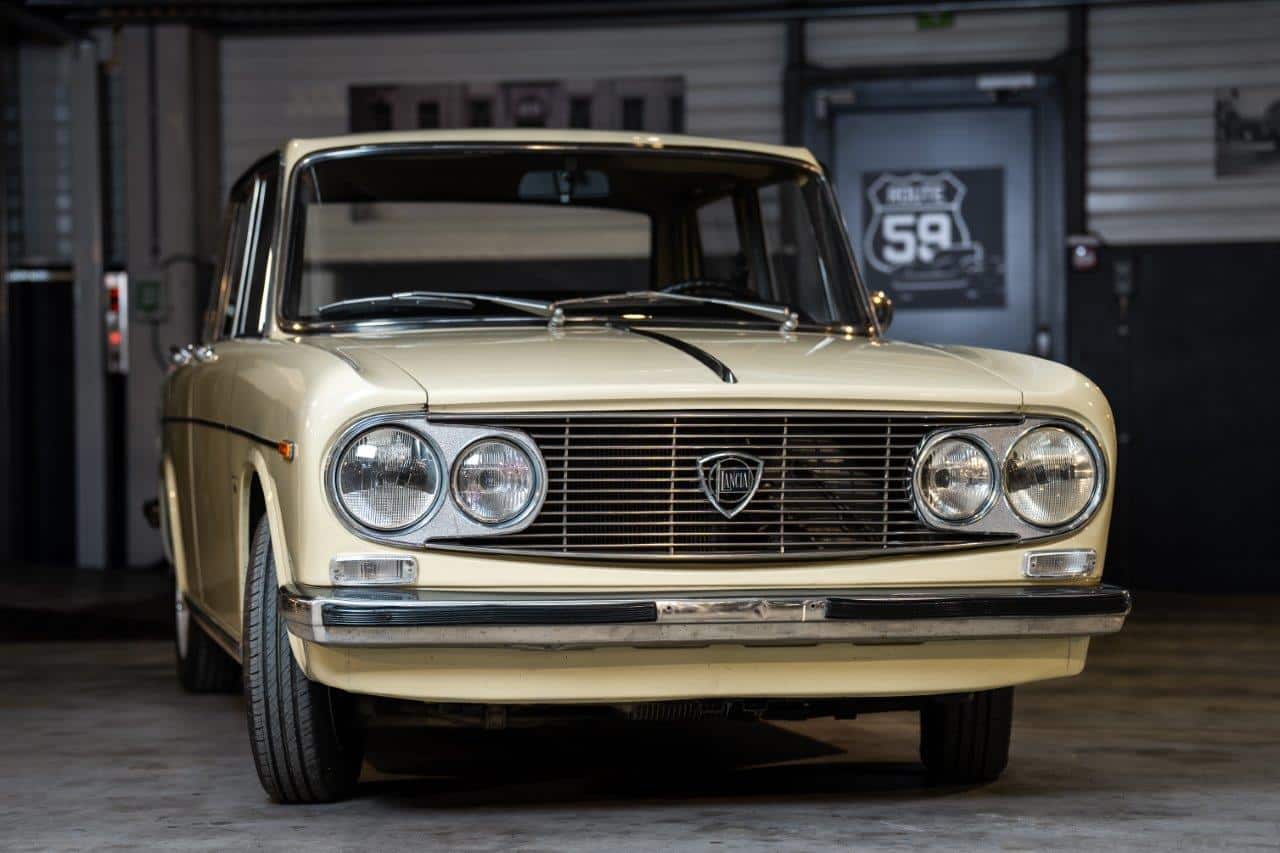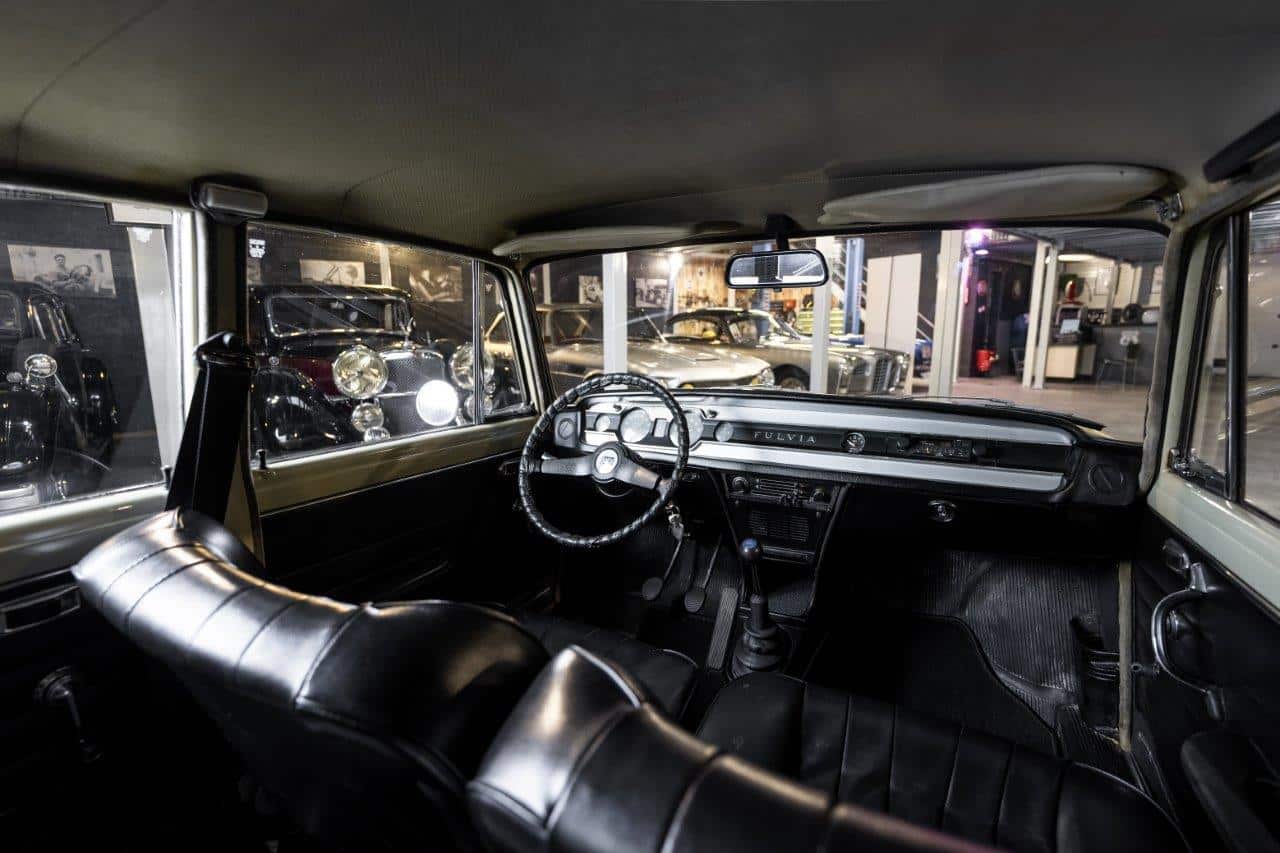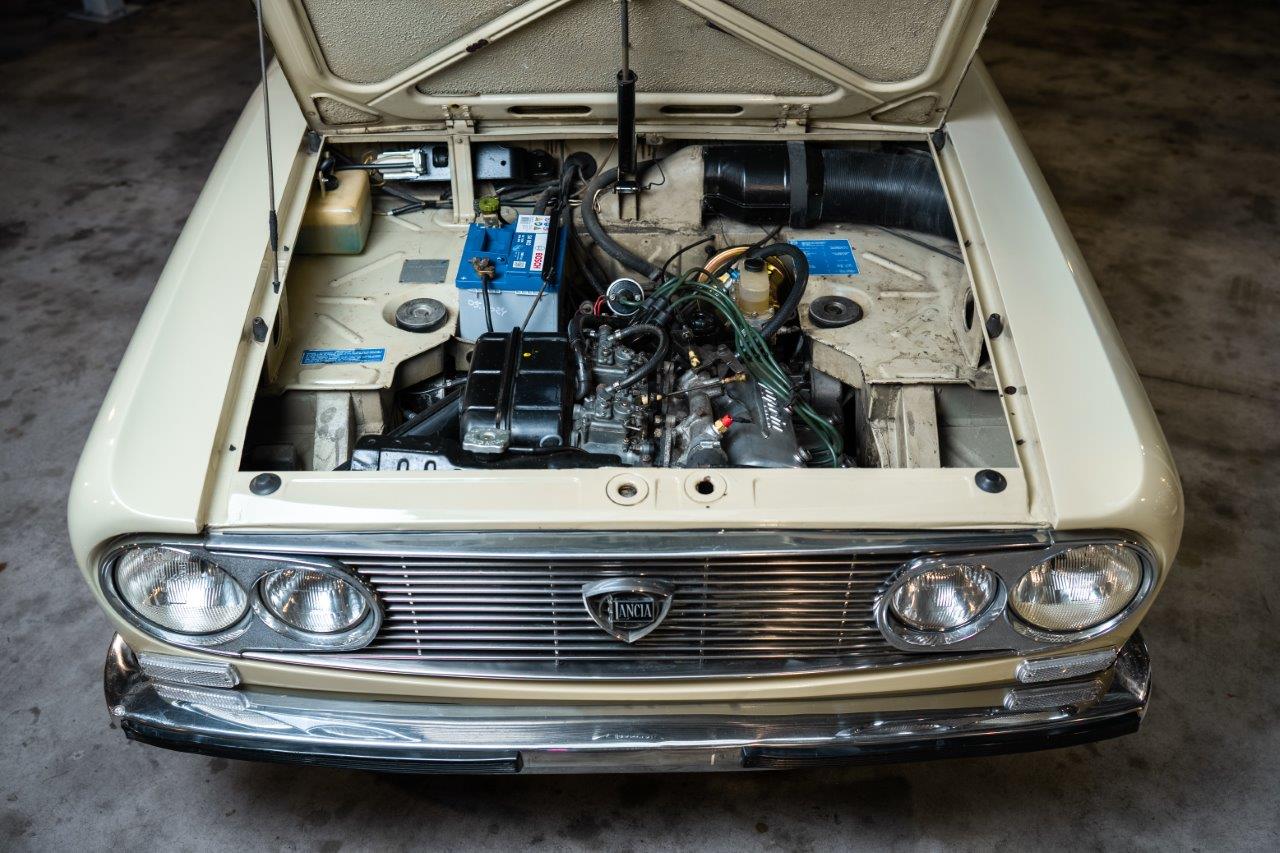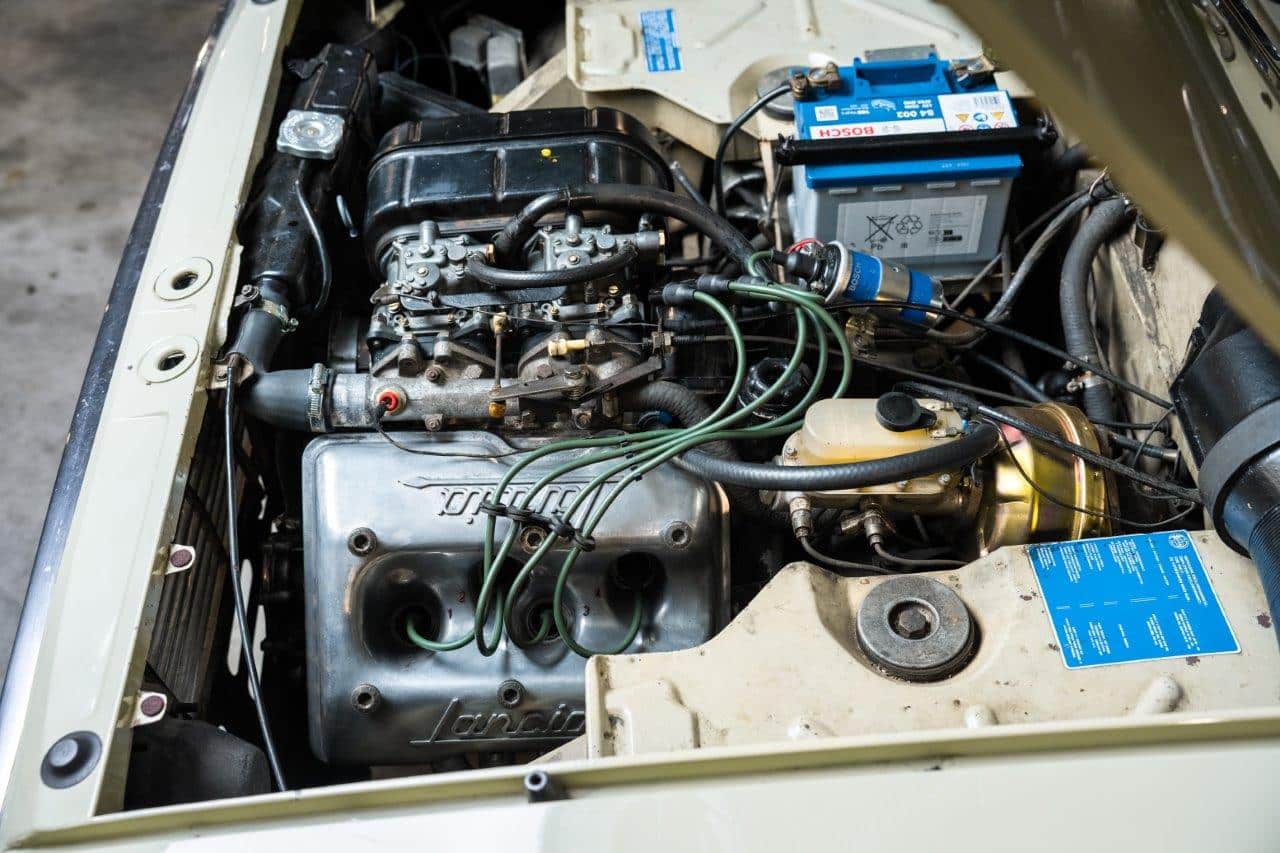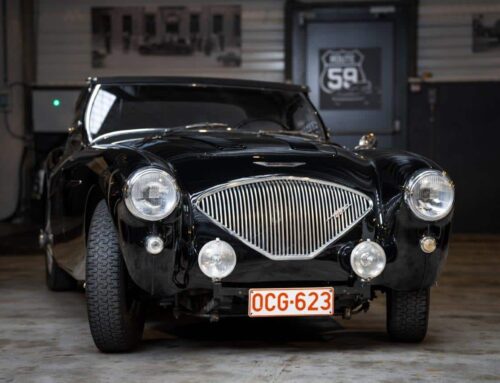Lancia Fulvia Berlina 1.3 Serie 2
| Brand | Lancia |
| Model | Fulvia Berlina 1.3 Serie 2 |
| Color | Beige |
| Transmission | Manual 5-speed |
| Pk | 90 ch |
| Mileage | 39.000 km |
| Year | 1972 |
| Price | 13.000 € |
The first Fulvia marketed was a 4-door sedan, launched in 1963 to replace the Lancia Appia. Characterized by unattractive rectangular lines in three volumes (although it was designed by Pietro Castagnero, who was also responsible for the more successful Fulvia Coupé), the Fulvia sedan nevertheless featured a fairly modern design. Its technical characteristics included front-wheel drive, a 12° V4 engine, 4 disc brakes, and a front chassis integrating an independent suspension as well as an engine/gearbox block. With a displacement of 1,091 cm³, the small V4 powered by a single carburetor developed a maximum power of 58 hp, allowing the aerodynamically profiled car to reach a top speed of 138 km/h. Despite a body often criticized but nevertheless elegant, the Fulvia achieved some success thanks to its comfort, meticulous finish, and excellent road handling. It was this road handling that prompted the brand’s customers to demand a more powerful engine. Their wish was granted in 1964 with the 2C version, equipped with two carburetors, followed by the GT with the 1,216 cm³ engine from the Fulvia Coupé. In 1968 came the GTE, equipped with a new 1,298 cm³ engine (87 hp for a top speed of 162 km/h). This was the last evolution of the first series Fulvia sedan. In 1970, the small Lancia sedan was restyled, giving birth to the second series Fulvia. Aesthetically, the changes mainly concerned the redesigned lights and the front end with a new grille. Technically, it now benefited from the 5-speed gearbox of the Coupé. The dashboard, seats, and door panels were also redesigned. Only one engine was now in the catalog: the 1,298 cm³ engine increased to 90 hp, common to the 1.3s Coupé. The choice of certain materials (of lower quality compared to the first series) sparked controversy among brand purists, highlighting Fiat’s entry into Lancia’s capital. Indeed, Lancia had just been acquired by the Turin giant in 1969. This example is a 2nd series from 1972, the very last year of production. It is in very good condition, having been restored a few years ago. It shows no corrosion, the engine runs perfectly with good oil pressure. It is accompanied by a file of invoices representing the work over the past years.
- Brake system overhaul
- New brake servo
- Carburetor overhaul
- New exhaust manifold
- New exhaust system


